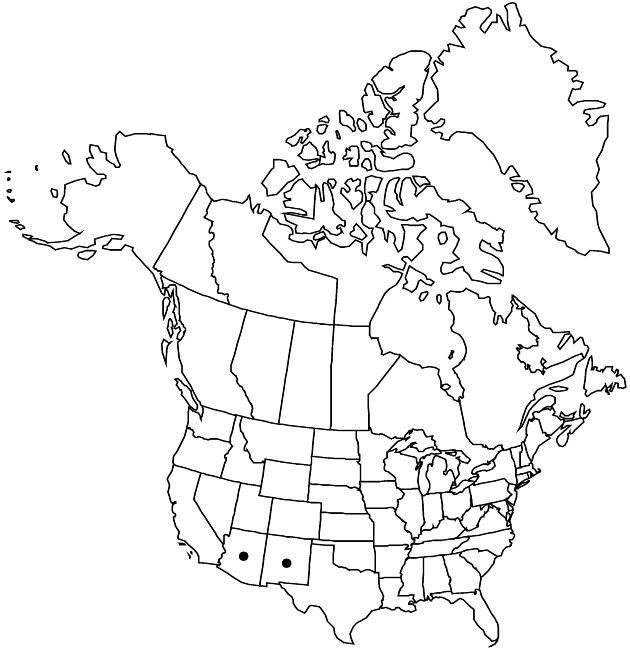Acourtia thurberi
Phytologia 27: 231. 1973.
Common names: Thurber’s desertpeony
Basionym: Perezia thurberi A. Gray Pl. Nov. Thurber., 324. 1854
Revision as of 20:56, 5 November 2020 by imported>Volume Importer
Plants 40–150 cm (stems sulcate to striate distally, densely glandular). Leaves cauline and/or basal; sessile; blades ovate to ovate-elliptic, 1.5 (cauline)–18 (basal) cm, bases shortly sagittate or clasping, margins acerose-denticulate, faces densely glandular-puberulent. Heads in subcongested corymbiform arrays. Involucres obconic to campanulate, 7–9 mm. Phyllaries in 2–3 series, oblong-oblanceolate, apices acuminate, abaxial faces densely glandular-hairy. Receptacles alveolate, glandular. Florets 3–6; corollas lavender-pink (purple), 7–12 mm. Cypselae subcylindric to subfusiform, 3–7 mm, glandular; pappi bright white, 8–9 mm (rigid). 2n = 54.
Phenology: Flowering Oct–Nov.
Habitat: Gravel and caliche soils in warm Sonoran desert scrub
Elevation: 100–200 m
Distribution

Ariz., N.Mex., Mexico (Chihuahua, Durango, Sonora).
Discussion
Selected References
None.
Lower Taxa
None.